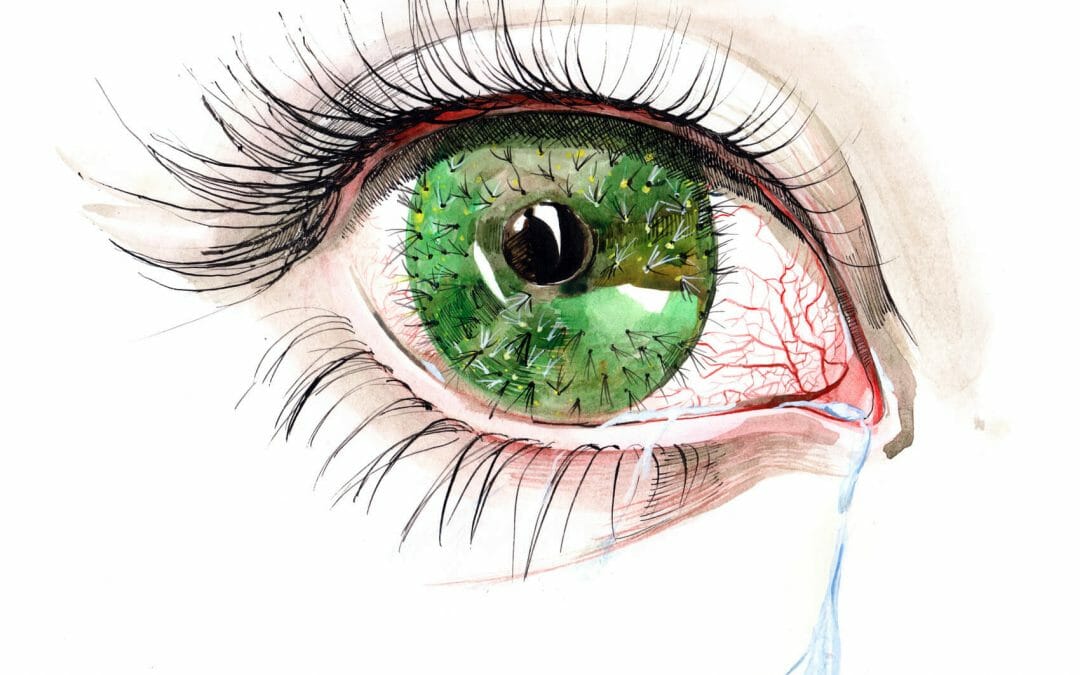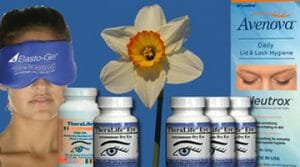Do you have facial rosacea?
Rosacea is a skin disorder that affects 16 million Americans. According to the National Rosacea Society (NRS), this number has jumped up by 2 million in the past ten years. Since Rosacea occurs mainly on the cheeks and nose, it is common for those who suffer from this chronic skin condition to develop ocular rosacea (inflammation of the eyes).
Relationship between facial and ocular rosacea
In fact, many rosacea patients miss the connection between their dry eyes and skin disorder since eye discomfort is not usually associated with their facial manifestations from Rosacea.
Since most people do not associate eye discomfort with a skin disorder and the symptoms can be severe, many rosacea patients may not recognize that they suffer from the ocular as well as the facial manifestations of the disorder.
What is Ocular Rosacea?
Ocular rosacea, or eye rosacea is a form of chronic dry eyes. It causes burning, itching, and redness of the eyes. In fact, ocular rosacea can often be the first sign that a person may later develop facial rosacea.
Primarily affecting adults ages 30 to 50, this eye condition seems to develop in those who blush easily. There is no cure for ocular rosacea, but with a good eye-care routine, the signs and symptoms can be controlled.
What are the Symptoms?
The symptoms of ocular rosacea are very much like that of chronic dry eyes. It can occur in conjunction with, before, or even after facial rosacea symptoms occur. The symptoms of ocular rosacea include:
- Burning
- Stinging
- Dryness
- Redness
- Grittiness
- Blurred Vision
- Sensitivity to light
- Visible small, dilated blood vessels in the whites of the eyes
- Red, swollen eyelids
- Tearing
The National Rosacea Society reports that up to 60 percent of rosacea patients surveyed reported watery or bloodshot eyes that were irritated, burning, or stinging. In addition, styes and swollen eyelids are common.
What are the Causes?
For patients who were diagnosed with ocular rosacea, eighty-five percent had meibomian glad dysfunction (clogged Meibomian oil glands located on the upper and lower eye lids).
The edge of the eyelid contains these glands that secrete a fatty substance to keep the surface of the eye from drying out. When these glands become plugged, the result can be dry eyes, styes, or chalazions. If left untreated, ocular rosacea go from a mild irritation to a severe condition that can damage the cornea and cause reduced visual acuity.
Research is continuing to uncover more information that will ultimately help doctors make a quicker diagnosis. Studies have shown there are differences in the tears and saliva of rosacea patients and healthy patients on a molecular level.
The presence of bacteria associated with Demodex mites in the eyelashes of ocular rosacea patients was thought to be a possible reaction to the mites or other microbes.
Other ocular rosacea causes include:
- Heredity
- Environmental factors
- Bacterial involvement
- Blocked meibomian glands in the eyelids
- Eyelash mites- Demodex
Factors that may aggravate rosacea that are controllable by patients include limiting exposure to:
- Hot or spicy foods
- Alcohol
- Extreme temperatures, wind, or sunlight
- Stress, anger, or embarrassment
- Hot baths or saunas
- Certain medications that dilate blood vessels, such as cortisone creams
What are the Complications?
The surface of the eye, or cornea, may be affected by ocular rosacea, especially when there is a lack of tears from dry eyes. When there are corneal complications, vision can be reduced.
A second irritation of the cornea can be a result of blepharitis, an inflammation of the eyelids. If left untreated, corneal complications can ultimately lead to vision loss.
What are Some Natural Treatment Options?
TheraLife has a complete line of natural products to maintain proper eye hygiene. In addition, TheraLife natural dry eye relief addresses the primary cause of dry eyes: underactive tear secretion.
Many ocular rosacea patients suffer from meibomian gland dysfunction, and TheraLife’s complete line of natural chronic dry eye relief products help the body heal from the inside out.
With TheraLife’s Eye Enhanced Starter Kit, patients suffering with dry eyes due to ocular rosacea will find relief with 4 bottles of TheraLife Eye Enhanced, 1 bottle of Omega-3 Fish Oil, 1 bottle of Eye Lid Cleanser, and 1 Hot Compress. Stop suffering from dry eyes and start finding relief with TheraLife.






Hello! For three years I’ve had rosacea on my cheeks. For me, it has been really difficult to accept it. A few months ago, I couldn’t even leave my house without makeup. The treatment that is helping me a lot is DermaalMD’s treatment for rosacea.
Good to know. Thanks for sharing
Very informative! I like the info shared by you. Thanks and keep sharing.
Thank you for your response. Glad you find it helpful.